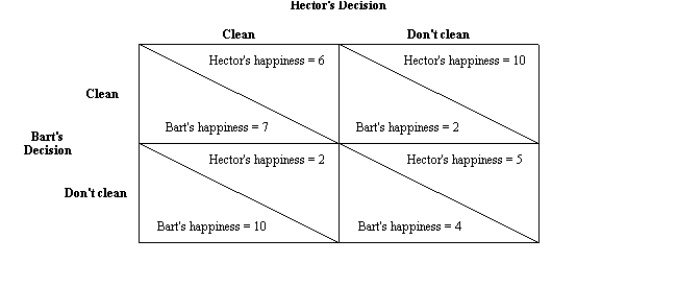Figure 17-3. Hector and Bart are roommates. On a particular day, their apartment needs to be cleaned. Each person has to decide whether to take part in cleaning. At the end of the day, either the apartment will be completely clean (if one or both roommates take part in cleaning) , or it will remain dirty (if neither roommate cleans) . With happiness measured on a scale of 1 (very unhappy) to 10 (very happy) , the possible outcomes are as follows: 
-Refer to Figure 17-3. The possible outcome in which both Hector and Bart clean is analogous to which of the following outcomes of the duopoly game?
Definitions:
Live Alone
The act or state of residing in a dwelling by oneself without cohabitants.
Majority
The greater part or number; often used to denote the age at which a person gains full legal rights and responsibilities.
White
A racial classification often used to refer to people of European origin, but can also denote purity or absence of color in different contexts.
Marriage Squeeze
A demographic imbalance in which the number of potential brides does not approximately equal the number of potential grooms within a certain population.
Q61: Refer to Table 18-10. This table describes
Q86: Refer to Table 17-12. If there are
Q98: The theory of oligopoly provides a reason
Q110: Refer to Table 17-20. What is Nadia's
Q120: Acme Computer Co. sells computers to retail
Q134: Refer to Table 17-15. Which of the
Q156: Refer to Table 18-11. What is the
Q182: Refer to Table 17-26. If both firms
Q365: Hot dog vendors on the beach fail
Q515: Refer to Table 17-13. Increasing the size